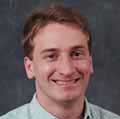Generative Geometric Design and Boundary Solid Grammars
-
Carnegie Mellon University PhD Dissertation
1991
- abstract:
This thesis explores the automatic generation of solid models based grammatical paradigm. It introduces a formalism, boundary solid grammars, for this purpose. In this formalism, a set of geometric rules is applied to an initial solid model to generate a language or family of solids. A rule may match on a portion of the boundary of the solid, and then modify the solid, or add new solids.
Genesis is presented as an implementation of the formalism. A number of grammars have been constructed to demonstrate the concepts and usefulness of the formalism. These grammars generate simple geometric forms, such as snowflakes, recursive octahedra, "fractal mountains", and spirals. Another grammar generates stereo lithography support structures. Queen Anne houses have been characterized with a more extensive grammar. Grammars are also being developed to generate housings for small computers and structural designs for high-rise buildings.
The thesis introduces the unary shape operations and a new paradigm for solid modeling. The unary shape operations take models that may have self-intersections, interpret the models considering the given geometry and face orientations, and produce valid models. Local operations, the unary shape operations, and Boolean operations are used together within a valid modeling scheme.
The thesis introduces a new boundary representation for manifold and nonmanifold solids, the generalized split-edge representation. It describes generalized Euler operations which manipulate the topology of the nonmanifold representatoin. Finally, the thesis presents a form of the Euler-Poincare equation that characterizes the relationship between elements of nonmanifold surfaces of solids.
